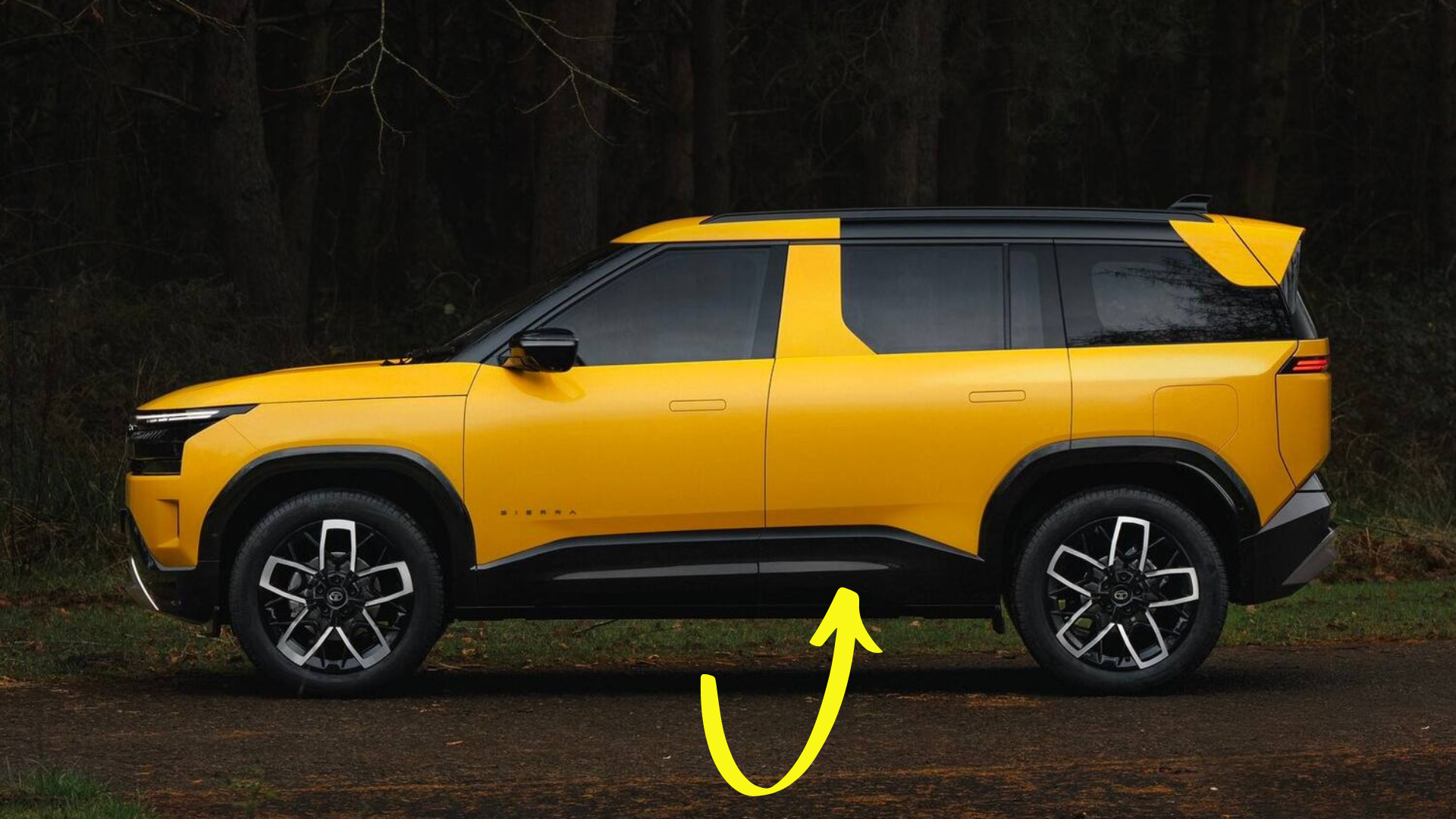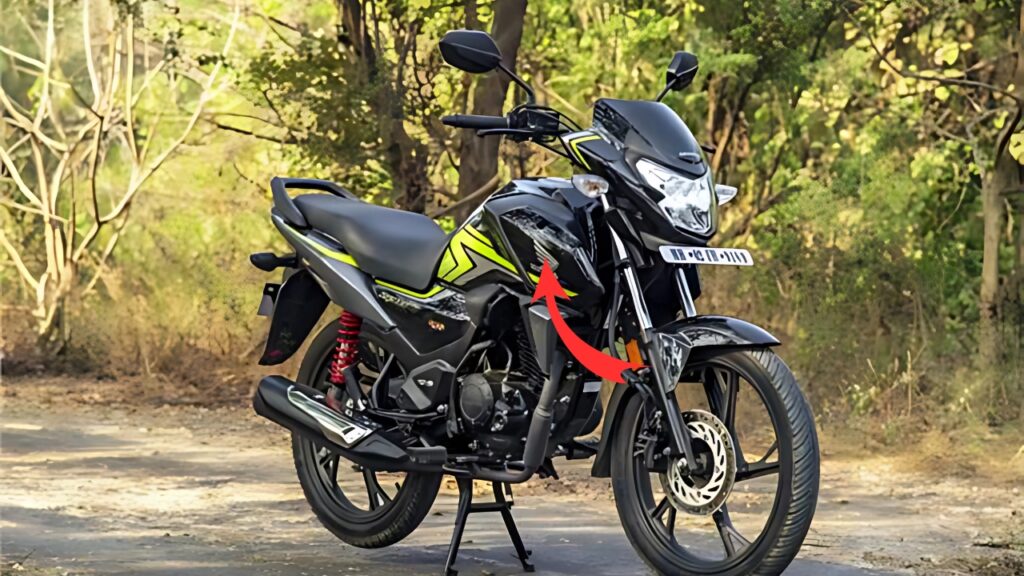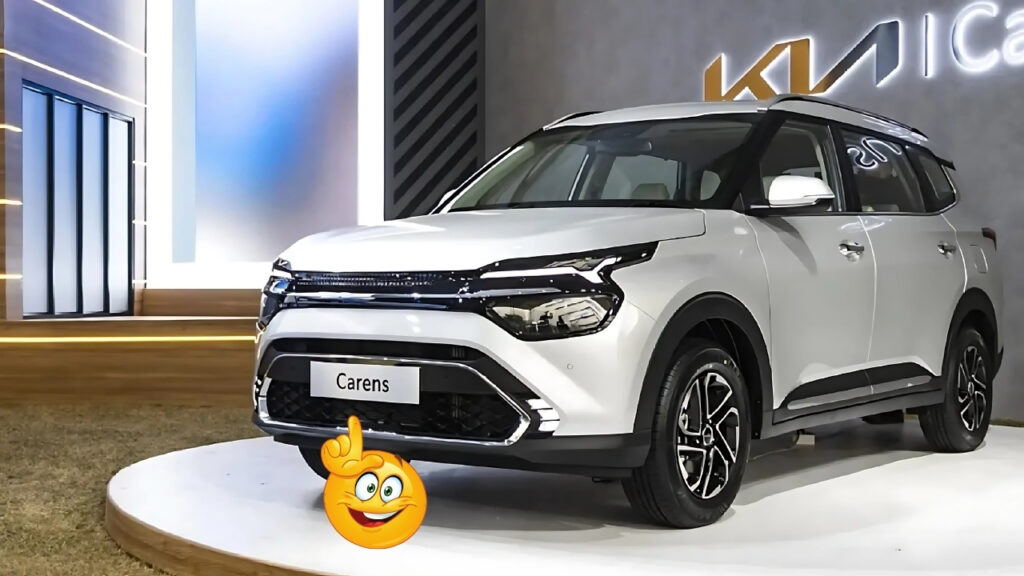Tata Motors is gearing up for what might be its most ambitious year yet. The homegrown automotive giant has confirmed plans to launch four new models that promise to shake up their respective segments.
These launches represent not just new products but Tata’s evolving philosophy of blending innovation, sustainability, and premium features at competitive price points. Let’s dive into what Indian car buyers can expect from Tata Motors in the coming months.
Table of Contents
Tata Curvv: Redefining the Coupe-SUV Segment

The Tata Curvv stands as perhaps the most anticipated launch in Tata’s upcoming lineup. This coupe-SUV represents Tata’s bold entry into a segment that has thus far been dominated by premium international brands.
First unveiled as a concept at Auto Expo 2023, the production version stays remarkably faithful to the show car’s dramatic silhouette. The sloping roofline and muscular haunches give it an unmistakable presence on the road.
What makes the Curvv particularly noteworthy is Tata’s strategy of offering it in both ICE (Internal Combustion Engine) and electric variants. This dual approach reflects the company’s recognition of India’s transitional automotive landscape.
The Curvv EV will likely debut first, with the petrol and diesel versions following a few months later. This approach mirrors Tata’s successful strategy with the Nexon, where the electric variant has helped establish the model’s technology credentials.
Also Read: Mahindra BE6 futuristic SUV launched with premium features
Curvv Powertrain Options and Performance
Under the hood, the Curvv will showcase Tata’s latest powertrain technologies. The EV variant is expected to feature an advanced battery pack delivering approximately 500 kilometers of range per charge.
This impressive figure would position it above current competitors and address the range anxiety that remains a significant barrier to EV adoption in India. Fast-charging capability will likely be standard, enabling substantial range recovery in under 30 minutes.
For traditionalists, the ICE version is expected to offer multiple options. These will likely include Tata’s 1.2-liter turbo-petrol engine producing around 120 horsepower and their refined 1.5-liter diesel unit.
Transmission choices should include both manual and automatic options, with the possibility of a dual-clutch transmission for higher variants. This variety ensures the Curvv can appeal to diverse driving preferences.
Interior Technology and Features
Inside, the Curvv promises to elevate Tata’s interior game significantly. Spy shots suggest a thoroughly modern cabin dominated by a large floating touchscreen infotainment system and digital instrument cluster.
Sustainable materials will feature prominently, particularly in the EV variant, with recycled fabrics and responsibly sourced trim elements. This approach aligns with the eco-conscious positioning of the vehicle.
Connectivity options will be comprehensive, with wireless Apple CarPlay and Android Auto joining Tata’s increasingly sophisticated iRA connected car technology. Remote monitoring and control functions will be particularly advanced in the EV model.
Advanced driver assistance systems (ADAS) will likely make their most comprehensive appearance yet in a Tata vehicle. Features like adaptive cruise control, lane keeping assistance, and autonomous emergency braking should be available on higher trims.
Tata Altroz Racer: The Performance Hatchback
The Altroz Racer represents Tata’s entry into the performance hatchback segment, a category that has passionate followers but limited options in the Indian market. This hot hatch version of the popular Altroz promises to inject some excitement into the premium hatchback space.
Visually, the Altroz Racer distinguishes itself with sporty design elements including contrast racing stripes, aerodynamic additions, and exclusive alloy wheels. These touches communicate its performance credentials without being excessively flamboyant.
Power will come from the same 1.2-liter turbocharged petrol engine found in the Nexon, but tuned for an expected output of around 120 horsepower. This represents a substantial increase over the standard Altroz’s naturally aspirated option.
More significant than the power increase are the chassis modifications. Stiffer suspension, improved braking components, and refined steering calibration should transform the already competent Altroz into a genuinely engaging driver’s car.
Racing-Inspired Interior Upgrades
The interior receives a sporty makeover to match the exterior enhancements. Red accents throughout the cabin create a performance-oriented atmosphere that sets it apart from the standard model.
Sports seats with integrated headrests and contrast stitching provide both improved lateral support during spirited driving and a more premium feel. These seats will likely feature unique upholstery patterns exclusive to the Racer variant.
The dashboard and door panels will receive subtle enhancements, potentially including carbon-fiber-look trim elements and model-specific badging. These touches reinforce the performance positioning without overcomplicating the Altroz’s clean interior design.
Technology gets a boost as well, with the Racer expected to debut some features that will eventually proliferate throughout the Altroz range. An updated infotainment system with enhanced graphics and functionality seems likely.
Market Positioning and Target Audience
The Altroz Racer aims to attract enthusiast drivers who want an affordable yet genuinely sporty hatchback. This demographic has been underserved in recent years as manufacturers have focused primarily on practicality and efficiency.
Pricing will be critical to the model’s success. Expectations place it at a premium of approximately ₹1.5-2 lakh over comparable Altroz variants, positioning it as a special but not unattainable option within the lineup.
Competitors will include the Hyundai i20 N Line, though the Altroz Racer may offer more substantial performance upgrades. This differentiation could prove crucial in establishing it as the more authentic choice for driving enthusiasts.
Limited production numbers seem likely, at least initially. This approach would allow Tata to gauge market response while also creating an element of exclusivity that often appeals to performance vehicle buyers.
Tata Harrier EV: Electric Revolution in the Mid-Size SUV Segment
The Harrier EV represents perhaps Tata’s most ambitious electric vehicle project to date. Taking their successful mid-size SUV and converting it to an all-electric platform signals serious intent in the premium EV space.
Based on a modified version of the OMEGA architecture, itself derived from Land Rover’s D8 platform, the Harrier EV will benefit from a platform originally designed with flexibility in mind. This foundation provides excellent dynamics and structural integrity.
Visual distinctions from the ICE Harrier will be subtle but meaningful. Closed-off front grille, aerodynamically optimized wheels, and EV-specific color options will identify it as the electric variant without drastically altering the Harrier’s successful design language.
The recently refreshed Harrier’s sharp styling carries over with EV-specific accents, including blue highlights that have become a signature element of Tata’s electric vehicle lineup. These touches connect it visually with siblings like the Nexon EV and Punch EV.
Cutting-Edge Electric Powertrain
Power will come from Tata’s Gen 2 EV architecture, representing a significant advancement over their current electric offerings. Expectations include a substantial battery pack delivering a range of approximately 500 kilometers.
Dual-motor all-wheel drive seems a strong possibility, at least in higher specifications. This configuration would offer not just improved all-weather capability but also impressive performance, with acceleration likely to surpass even the most powerful ICE Harrier variants.
Fast-charging capability will be standard, with the infrastructure supporting up to 150kW charging stations. This technology should allow the Harrier EV to recover significant range in under 30 minutes, addressing a key concern for potential buyers.
Regenerative braking will be highly adjustable, potentially allowing for one-pedal driving in its strongest setting. This feature has proven popular with EV enthusiasts and helps maximize real-world efficiency.
Premium Interior and Technology Suite
The interior will build on the recently updated Harrier’s cabin with EV-specific enhancements. Expect a thoroughly digital experience centered around dual displays for instrumentation and infotainment.
Material choices will emphasize sustainability, with recycled fabrics and responsibly sourced materials featuring prominently. This approach aligns with the environmental positioning of electric vehicles.
The technology package will be comprehensive, including Tata’s most advanced iteration of their iRA connected car system. Remote climate control, battery monitoring, and charging station location services will be integrated.
Advanced driver assistance features will be more extensive than in any previous Tata model, potentially including highway driving assist, which combines adaptive cruise control with lane centering for semi-autonomous highway driving.
Tata Sierra EV: Reimagining an Icon
Few announcements have generated as much excitement among Indian automotive enthusiasts as the return of the Sierra nameplate. The original Sierra holds a special place in India’s automotive history, and its electric reimagining represents a fascinating blend of nostalgia and forward-thinking.
First shown as a concept at Auto Expo 2020, the production Sierra EV will retain the distinctive design elements that made the original a style icon. The signature wraparound glass area at the rear creates a unique greenhouse that immediately identifies it as a Sierra.
While honoring the past, the new Sierra thoroughly embraces the future as an electric-only model, at least initially. This bold strategy positions it as a lifestyle vehicle for forward-thinking buyers who appreciate both heritage and innovation.
The Sierra will utilize Tata’s dedicated EV platform, allowing for optimal packaging and weight distribution. This architecture enables the distinctive tall body design while maintaining appropriate proportions.
Powertrain Specifications and Performance
Battery capacity is expected to be substantial, with a range target of approximately 450-500 kilometers. This figure would position it competitively within the premium electric SUV segment.
Motor configuration remains speculative, but both single and dual-motor options seem likely. The top specification could produce over 200 horsepower, delivering performance that far exceeds the original Sierra.
Charging capabilities will match other premium Tata EVs, with DC fast-charging enabling significant range recovery in under 30 minutes. Home charging options will include support for increasingly common 7.2kW wallboxes.
Drive modes will allow drivers to prioritize either maximum range or performance, with corresponding adjustments to power delivery, regenerative braking strength, and climate control operation.
Interior Design and Lifestyle Focus
The interior will be the Sierra’s standout feature, emphasizing spaciousness and flexibility. The concept’s lounge-like rear seating area suggests a focus on passenger comfort rather than maximum cargo capacity.
Materials will blend tactile quality with sustainability, featuring recycled fabrics, responsibly sourced wood accents, and minimal use of animal-derived materials. These choices reflect changing consumer preferences in the premium segment.
Technology integration will be seamless but not overwhelming, with displays and controls thoughtfully positioned to minimize distraction. This human-centered approach distinguishes the Sierra from increasingly screen-dominated competitor interiors.
The panoramic glass roof will be a signature feature, flooding the cabin with natural light and enhancing the sense of spaciousness. Advanced electrochromic technology will likely allow for variable transparency.
Comparative Analysis: Market Positioning and Target Demographics
| Model | Segment | Expected Price Range (₹ Lakh) | Key Competitors | Primary Target Audience |
|---|---|---|---|---|
| Curvv | Coupe SUV | 15-22 (ICE), 18-25 (EV) | Citroen C3 Aircross, Kia Seltos | Style-conscious urban professionals |
| Altroz Racer | Premium Hatchback | 10-13 | Hyundai i20 N Line, Volkswagen Polo GT | Driving enthusiasts seeking affordable performance |
| Harrier EV | Mid-size SUV | 25-35 | MG ZS EV, Hyundai Kona Electric | Tech-forward families, environmental conscious premium buyers |
| Sierra EV | Lifestyle SUV | 25-32 | Hyundai Creta EV (upcoming), MG ZS EV | Nostalgia-driven innovators, outdoor lifestyle enthusiasts |
This positioning strategy allows Tata to address multiple market segments while maintaining a consistent brand identity centered around innovation, design, and value.
The spread across different price points ensures that Tata can capture customers at various stages of their automotive journey, potentially fostering brand loyalty as buyers progress to more premium offerings.
Production Timelines and Launch Strategy
The rollout of these four models will be staggered throughout the year, allowing Tata to maintain a consistent presence in automotive media and showroom traffic.
Current information suggests the Altroz Racer will debut first, likely in the next few months. Its relatively straightforward development process as a variant of an existing model facilitates this earlier launch.
The Curvv EV will likely follow in mid-year, with its ICE counterpart arriving a few months later. This strategy allows Tata to establish the model’s technological credentials before offering the more mainstream variants.
Both the Harrier EV and Sierra EV are expected toward the end of the year, potentially around the festive season when automotive sales traditionally peak in India. Their premium positioning aligns well with this timing.
Impact on Tata’s Overall Market Position
These launches collectively represent Tata’s most significant product offensive in recent memory. Successfully executing all four will substantially strengthen the company’s position across multiple segments.
Particular attention should be paid to how these models expand Tata’s electric vehicle portfolio, potentially establishing them as the dominant domestic player in the rapidly growing Indian EV market.
The diversification of price points is equally significant, allowing Tata to compete effectively from the premium hatchback segment all the way to the mid-size SUV category. This broad coverage has historically been a challenge for Indian manufacturers.
Dealer network expansion will likely accompany these launches, with particular emphasis on the premium Neuron outlets that will house the higher-end models. This retail strategy acknowledges the importance of purchase experience for premium vehicles.
Technology Highlights Across the New Lineup
Certain technological elements will feature prominently across all four new models, reflecting Tata’s current development focus and market positioning.
Connected car technology represents a major emphasis, with the latest generation of Tata’s iRA system offering enhanced functionality. Remote monitoring and control features will be particularly advanced in the EV models.
Safety continues as a core Tata value, with robust structural designs and comprehensive active safety suites. The company’s strong performance in Global NCAP testing has become a significant marketing advantage.
User interface design shows significant evolution, with cleaner graphics and more intuitive menu structures. This refinement addresses occasional criticisms of earlier Tata infotainment systems.
Voice command capabilities receive substantial upgrades, with natural language processing allowing more conversational interaction. This technology recognizes various Indian accents and supports multiple regional languages.
Challenges and Opportunities
The ambitious launch schedule presents both opportunities and challenges for Tata Motors. Supply chain management will be critical, particularly given ongoing semiconductor shortages affecting the global automotive industry.
Production capacity requires careful planning, especially for models expected to generate significant demand. Tata’s recent factory expansions position them well, but allocating resources optimally across the lineup will remain challenging.
Pricing strategy demands particular attention in India’s price-sensitive market. Tata has historically maintained competitive pricing, but rising input costs and enhanced features create upward pressure that must be balanced against market expectations.
After-sales service capacity represents another consideration, particularly for the EV models that require specialized training and equipment. Tata has been progressively upgrading dealer capabilities, but the pace must accelerate to match the expanded lineup.
What These Launches Mean for Indian Consumers
For Indian car buyers, Tata’s upcoming lineup represents an expanded range of options with a stronger emphasis on design, technology, and electrification than typically associated with domestic manufacturers.
The performance focus of the Altroz Racer addresses enthusiast drivers who have often had to compromise or look to international brands. This model could help retain passionate drivers within the domestic brand ecosystem.
Electric vehicle options across multiple segments and price points will make zero-emission driving accessible to more consumers. Tata’s approach of offering various entry points to electrification acknowledges different buyer readiness levels.
The premium positioning of models like the Sierra EV challenges perceptions about domestic brands’ ability to compete in higher price segments. Success here could fundamentally alter market dynamics in the premium space.
Frequently Asked Questions
When exactly will the Tata Curvv launch in India?
The Curvv EV is expected to launch in mid-2025, with the ICE version following approximately 3-4 months later.
What will be the expected price of the Tata Altroz Racer?
The Altroz Racer is expected to be priced between ₹10-13 lakh (ex-showroom), positioning it as a premium offering in the hatchback segment.
Will the Tata Harrier EV offer all-wheel drive?
Yes, the higher variants of the Harrier EV are expected to feature dual-motor all-wheel drive for enhanced performance and capability.
How many kilometers range will the Tata Sierra EV offer?
The Sierra EV is expected to deliver approximately 450-500 kilometers of range on a full charge under ARAI testing conditions.
Are these new Tata models being manufactured in India?
Yes, all four models will be manufactured in India at Tata’s production facilities, with high levels of localization.
Will the Tata Curvv be available with a diesel engine option?
Yes, the ICE version of the Curvv is expected to offer both petrol and diesel engine options to cater to different buyer preferences.
Does the Tata Altroz Racer feature mechanical upgrades beyond the engine?
Yes, beyond the more powerful engine, it’s expected to feature improved suspension, enhanced braking components, and refined steering for a more engaging driving experience.
What charging infrastructure is Tata developing to support these new EVs?
Tata Power is aggressively expanding its charging network across India, with particular focus on fast-charging stations along major highways and in metropolitan areas.
Will these new models feature ADAS (Advanced Driver Assistance Systems)?
Yes, particularly the higher-end models like the Harrier EV and Sierra EV are expected to feature comprehensive ADAS packages including adaptive cruise control and autonomous emergency braking.
Are there plans for hybrid versions of these vehicles?
Currently, Tata appears to be focusing on either pure ICE or pure electric options rather than hybrids, though this strategy could evolve based on market conditions.





